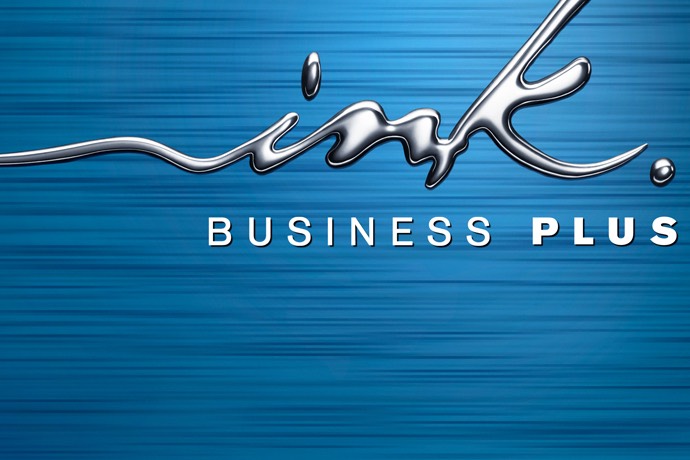Checking In: The Plum Card
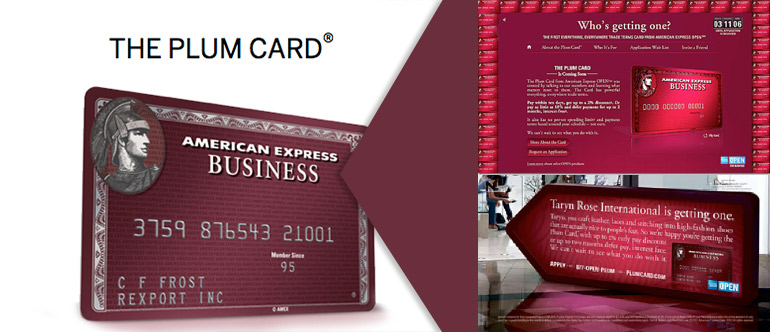
When American Express first* executed a well-publicized marketing campaign for a (then) new small business credit card – The Plum® Card from American Express. There were a few campaign elements that made the introduction of The Plum Card memorable:
- Scarcity marketing – From the get-go, Amex touted the limited opportunity to carry The Plum Card; there were only 10,000 plastics in the initial release. Amex took a stand not only stating the card was not for everyone, but also quantifying the number of cardholders under the “initial release.” This approach, generally reserved for consumer products targeting high net worth and ultra-high net worth segments, indicated American Express was onto something by co-mingling cachet with functionality of business payments beyond Amex Gold:
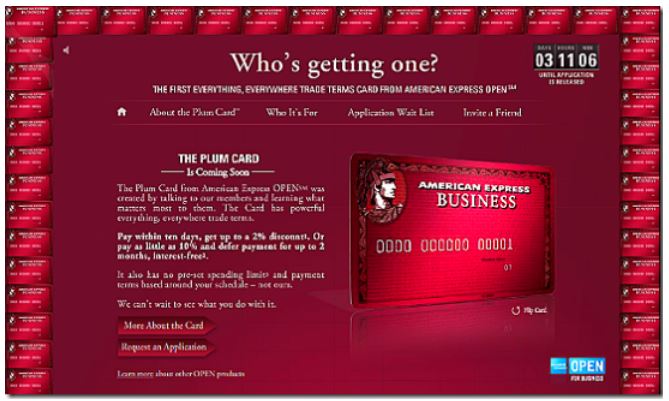
[SOURCE: NetBanker]
- Respectable above-the-line investment – Launch day and beyond, Amex ran print ads teasing up (and then officially announcing) the card in The Wall Street Journal, while top Google position via a sponsored link stayed true to the “limited” opportunity messaging:
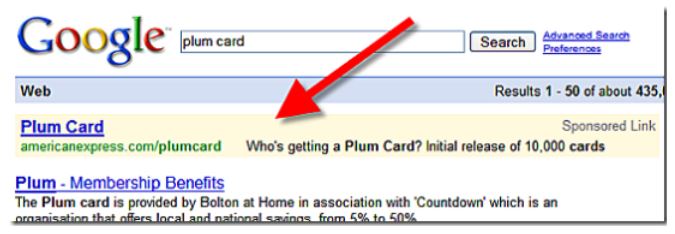
[SOURCE: NetBanker]
- Strategic alliance – The 2007 Inc. 500 conference attendees (mainly CEOs) were among the first to have the option to get the card. Attendees were surprised to find a complimentary leather case affixed underneath their seats with a gift of an iPhone along with The Plum Card.
- Aspirational – A New York Times article quoted Diego Scotti, vice president for global advertising at the American Express Company, “The plum job, the plum assignment — it’s something you strive for. We wanted to make the card feel aspirational, special.”
- Category disruption – Amex marketing is superb at brand and product amplification, establishing a persona and, at times, using personalities ranging from Karl Malden to Ellen DeGeneres and Tina Fey. And so The Plum Card used real SBOs – hip, successful, urban – to further define and establish the card brand. Until 2007, and until The Plum Card debuted, this way of thinking about business payment products had not quite crossed over from consumer marketing. Amex proved adept at crafting a distinct identity down to the details, such as the plastic. According to the vice president for global advertising, “When we were looking at the color of the plastic [during the planning stages], we wanted something classy and sophisticated.”
Within a year, American Express deemed The Plum Card launch successful – easily achieving its stated initial release of 10,000 and, seven months later, moving into the second release. The magic continued with an integrated marketing campaign, including this New York Times print ad featuring real-world cardmembers/SBOs – again: urban, hip, successful – aligned with Amex’s vision.
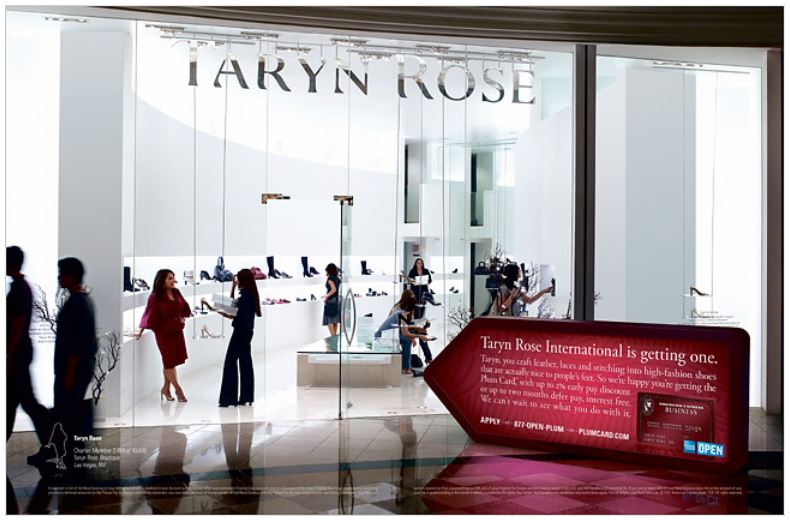
[SOURCE: New York Times]
Fast forward to the recent past, and it appears that for the most part Amex has pulled back on the innovative marketing that we experienced during the launch several years ago. A look at available marketing for The Plum Card indicates a different approach over the past two years. More recent marketing has less fanfare and less “for a few of us,” with more traditional acquisition offers served up in less costly channels:
- Web product landing page with e-mail follow-up – If a prospect peruses the card benefits and marketing pages but exits without applying, Amex offers the opportunity to have information sent directly to the prospect’s inbox:
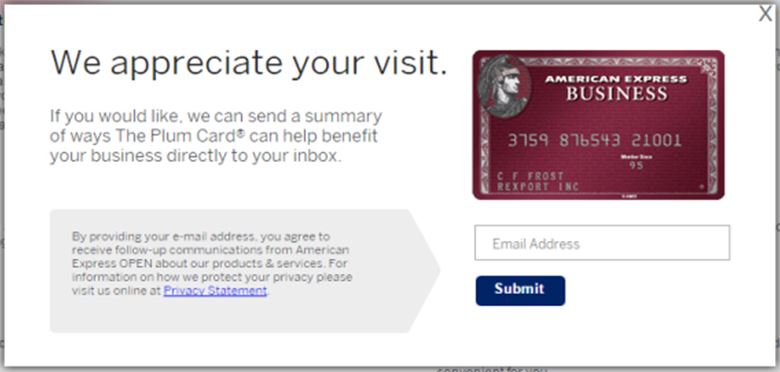
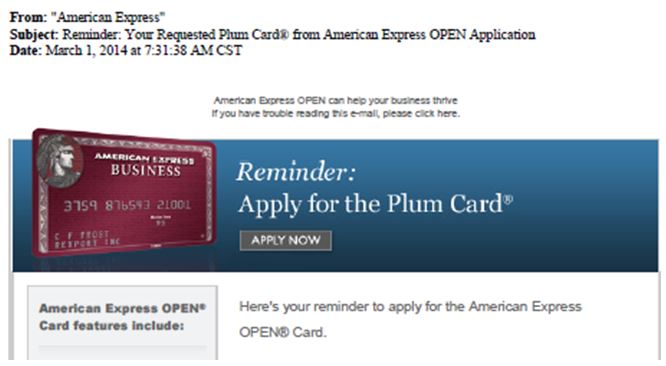
- Banner ads to reach likely targets – Void of any elite posturing, Amex now takes a straightforward and traditional approach to promoting the card. Payment flexibility – The Plum Card’s 1.5% early pay discount (a credit on statement) combined with 60 days to pay with no interest – is clearly the way in for the card. Ad placement on news sites help reach and motivate prospects with headlines like this: “More time or more money. You choose.” Some banners we spotted promoted both The Plum Card and Gold Amex for Business and suggest one of them is right for your business – again, your choice: discounts versus points.
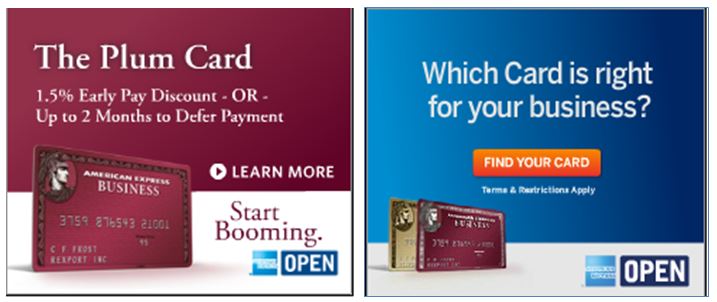
- Cost-effective direct channels – The last direct mail solicitations we could uncover dated back to 2013. The communications solely promoted business payment flexibility with no layer of exclusivity. The mail and e-mail do continue to personify, via actual cardmembers, exactly who remains the target for Amex:
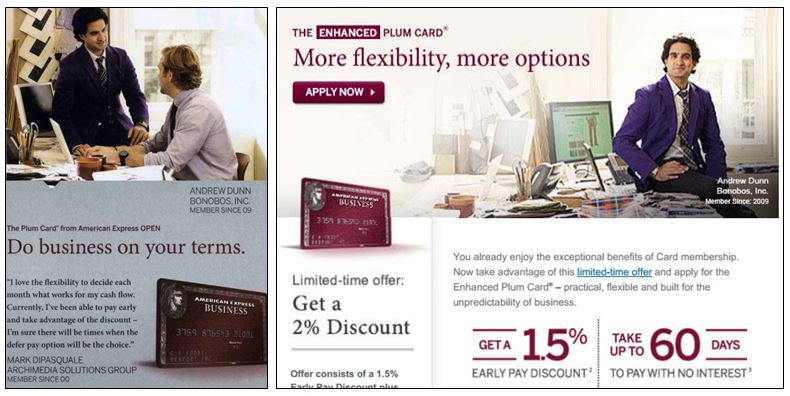
The Plum Card has taken its place amid the suite of Amex Small Business cards, seemingly fulfilling a niche for small business by Amex. Perhaps any credit card originally launched just prior to the financial crisis that challenged U.S. small business could not avoid a post-launch fanfare rethink… resulting in a new Amex marketing campaign for the product. In a post-recession world, with a high annual fee and a value proposition that appeals to high spenders, The Plum Card may still not have enough practical appeal to displace many other competitive products offered by Amex and other SBO-seeking card issuers like Chase, Capital One and U.S. Bank.
*2007
Unless otherwise noted, images are from Competiscan, a full-service, competitive intelligence market research firm that enables clients to study marketing and loyalty strategies by industry, company, product or recipient demographic. Media channels tracked include direct mail, email, online display, social media and print. Competiscan’s web-based search facility helps clients understand what consumers, business owners, financial advisors and insurance producers are viewing in the marketplace.









